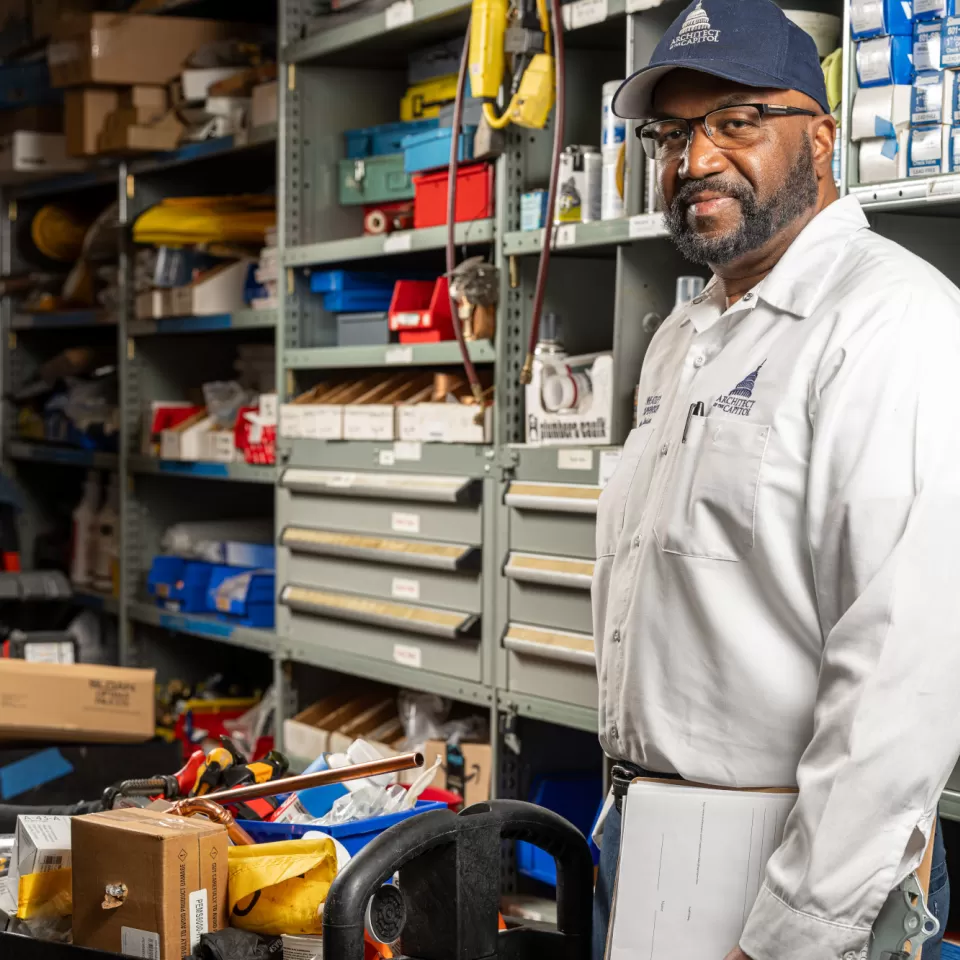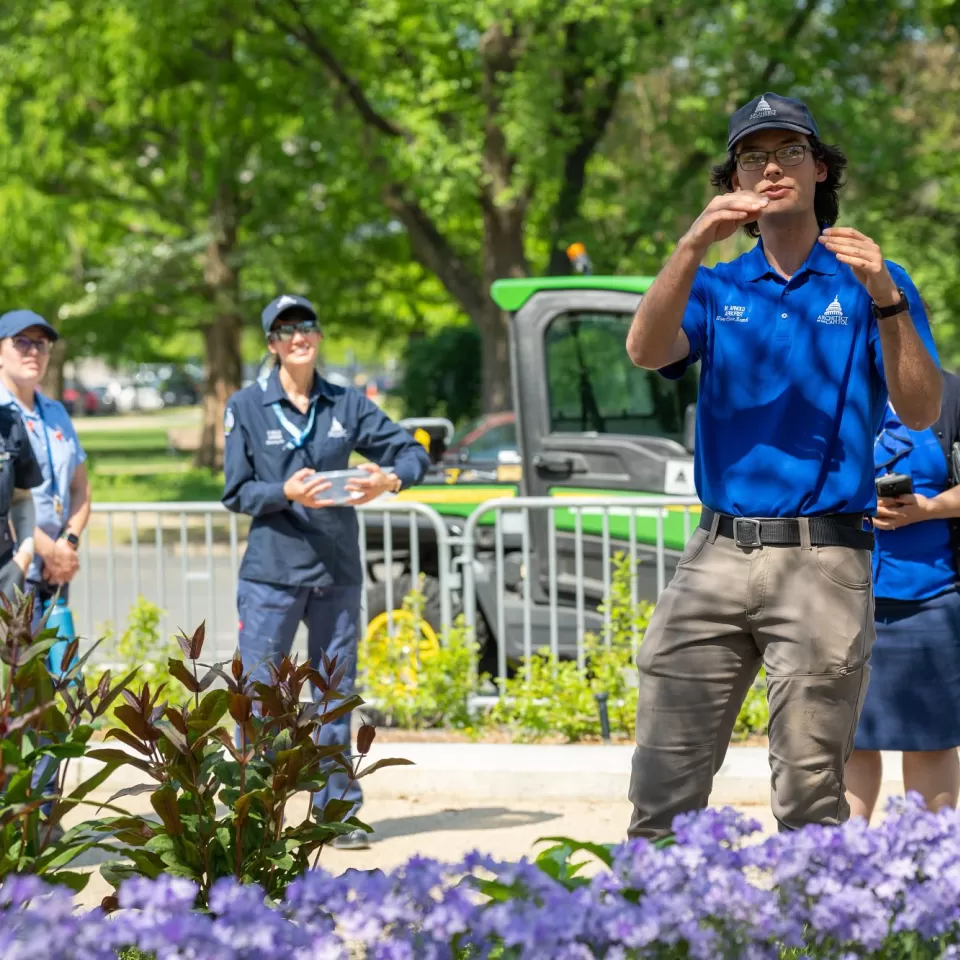Our Stories
Recent Articles
Behind the Scenes
Photography and Technical Imaging Branch Marks 75th Anniversary
Recent historical research has confirmed that the Architect of the Capitol is home to the first federal government photography office, what is today called the AOC Photography and Technical Imaging Branch.
Behind the Scenes
Meet the Team: Photography and Technical Imaging Branch
The Photography and Technical Imaging Branch (PTIB) is responsible for the documentation of the historical buildings and grounds under the care of the Architect of the Capitol (AOC) and capturing the historic events within those spaces.
Behind the Scenes
Leading by Example
Charles "Doc" Wheatley, Assistant Supervisor of the Capitol Building Plumbing Shop's evening shift, has been a constant presence on the Capitol campus since 1987. That's when he accepted his first government position and began a decades-long career serving this treasured institution.
Behind the Scenes
Arborists on Campus — The Art of Tree Care
Thanking those who keep our trees thriving.







Comments
A great article to not only read but think about how my life could fit into this mold. I am a retired pipefitter and worked in paper making plants, college storage units, many medical facilities. All of these needed to control moistures and tempture at the same time. Dufault to maintain. Thank You.
Add new comment